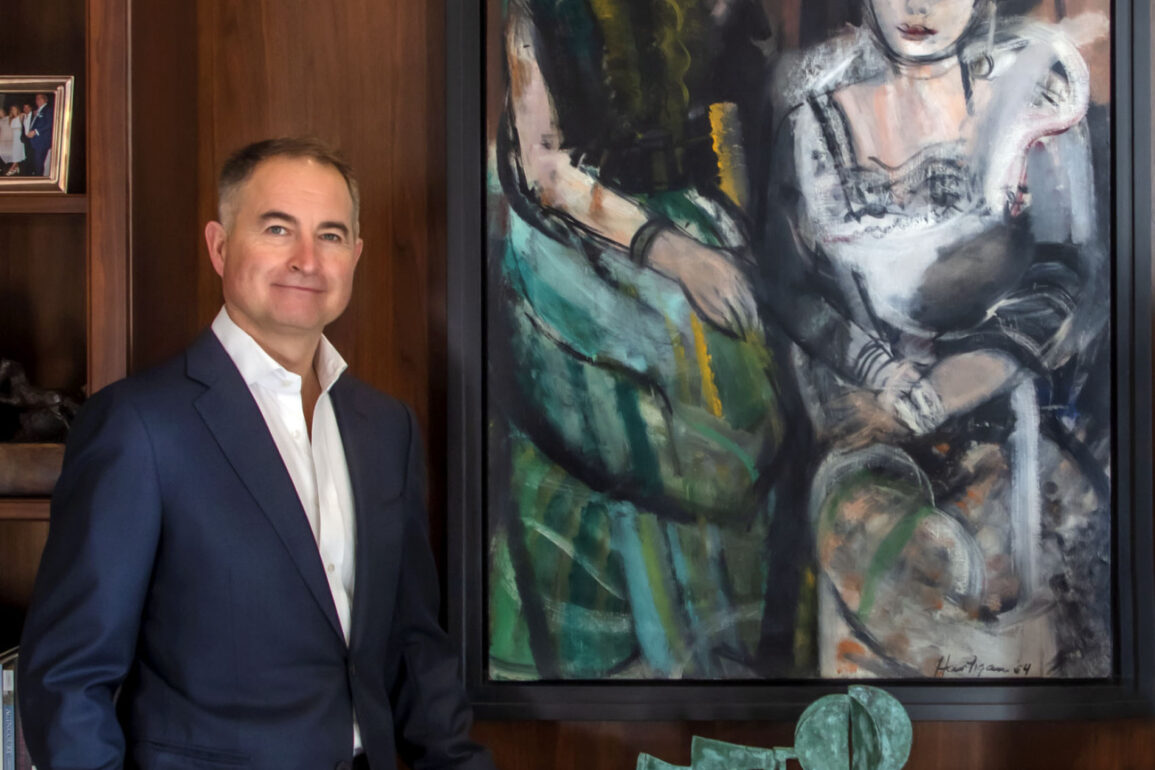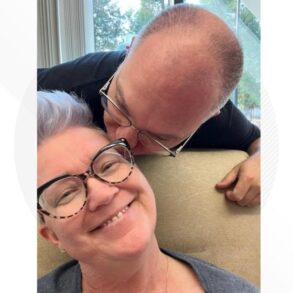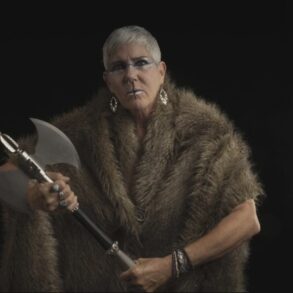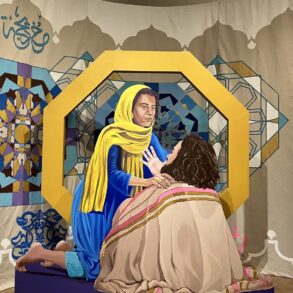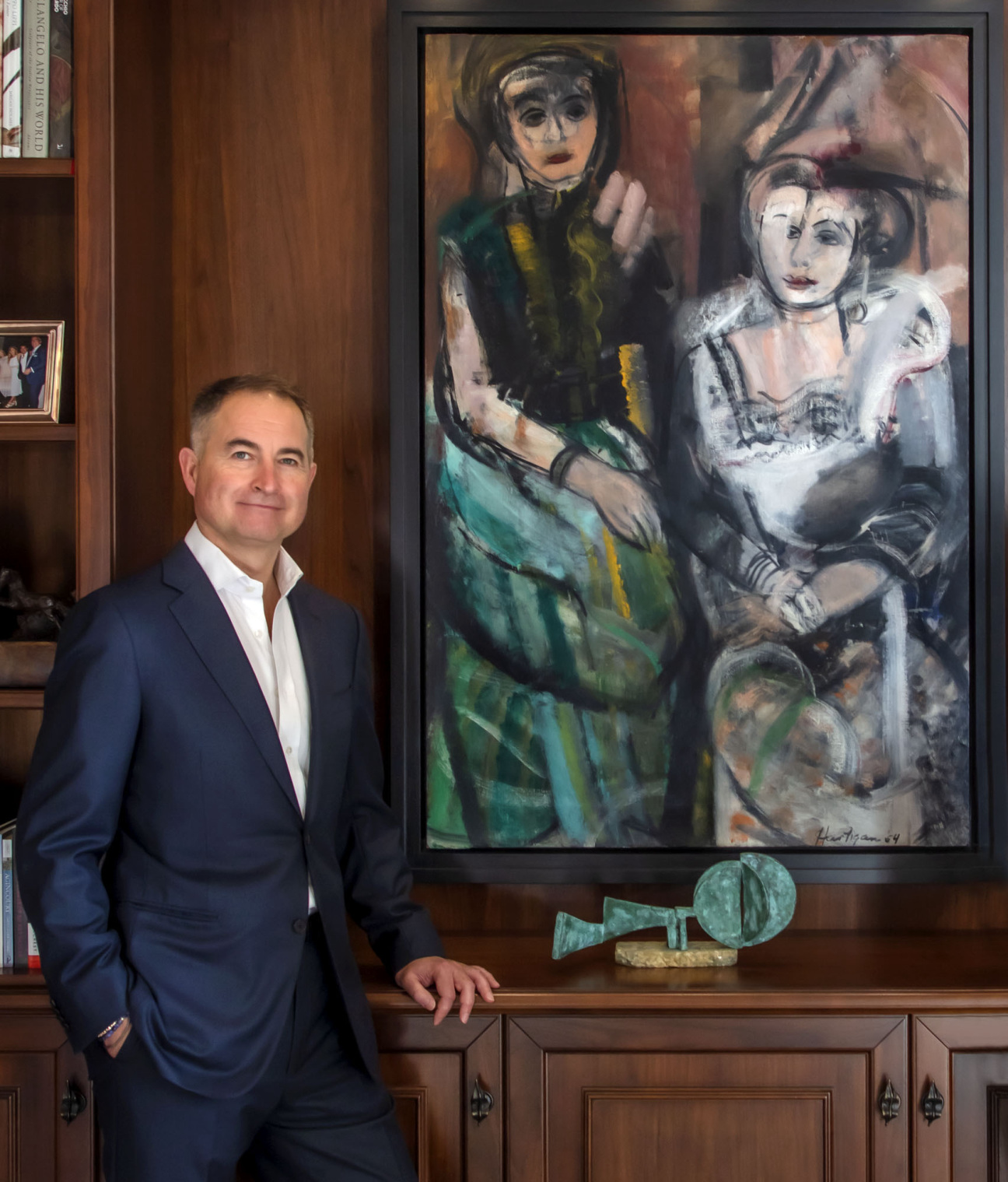
“I think all collectors, regardless of their background, have the same highly addictive behavior gene,” asserts Christian Levett. For the U.K.-born arts patron, the craving started as a child, beginning with coins and medallions. It was in his mid-20s that this love of history, fostered by his parents’ avid museum patronage, bloomed into an art collection.
While working in investment banking in Paris, Levett discovered the intoxicating world of antiquities, putting the earnings of his early successes toward ancient artifacts. Many of them came to be housed in his vacation home in the South of France. Near Cannes, the house in the medieval, alpine village Mougins proved the perfect place for his assortment of classical pieces and the ideal location to open the Mougins Museum of Classical Art.
As he has turned his attention to modern works, Levett has continued to be inspired—like generations of artists and patrons before him—by the vibrancy of the French creative scene and the decadence of Mediterranean light. Fascinated now by Surrealism, Impressionism, and Post-Impressionism, he has centered the continued cultivation of his collection on female artists. Recently, the Mougins Museum of Classical Art closed its doors to make way for the Female Artists of the Mougins Museum, featuring works from Levett’s collection by artsits including Berthe Morisot, Jeanne Hébuterne, and Jacqueline Marval.
From his similarly art-lined home in Florence, Levett lets readers in on the inspiration behind this shift and the singular charm of the Parisian art market.

Where does the story of your personal collection begin?
In Paris in 1995. I was always interested in history growing up, and I visited historical sights and museums with my parents, although we didn’t go to art museums. I worked in Paris for 18 months in my mid-20s and I knew I would only be there a short while, and that it was a great opportunity to self-educate in art history, using the museums of Paris.
So I started reading, researching, and then, inevitably, buying. I was only 25, but my earnings were exploding, so it financially allowed me to start collecting in a serious way quite quickly. You don’t necessarily need a lot of money to collect, of course. Many people happily collect things of very little value, and their collections are equally important to them in their own way.

How has the local art scene influenced your collection?
Since the plan to change my museum in Mougins from exhibiting my classical art collection to my modern female art collection, I’ve been more conscious about adding French female artists. I had also been expanding the collection to contain Impressionism and Post-Impressionism, and that led me to mostly buy from galleries and auction houses in France. So I’ve been adding artists such as Berthe Morisot, Blanche Hoschedé Monet, Jacqueline Marval, Jeanne Hébuterne, and Marie Bracquemond. And, on the later side, artists like Sonia Delaunay, Dora Maar, Francoise Gilot, and Niki de Saint Phalle.
On the contemporary side, naturally the gallery scene in the Marais has exploded in recent years, with many of the world’s major contemporary galleries having amazing spaces and shows in that area. That’s led me to be buying in that area of Paris, too. I’ve also generally tried to make it to FIAC then Art Basel Paris, which has always been a fair where galleries have put together very high-class stands, seeing as it’s not been a huge sprawling fair to date and I’ve generally felt over the years that this has led to an exceptional curation of their stands.
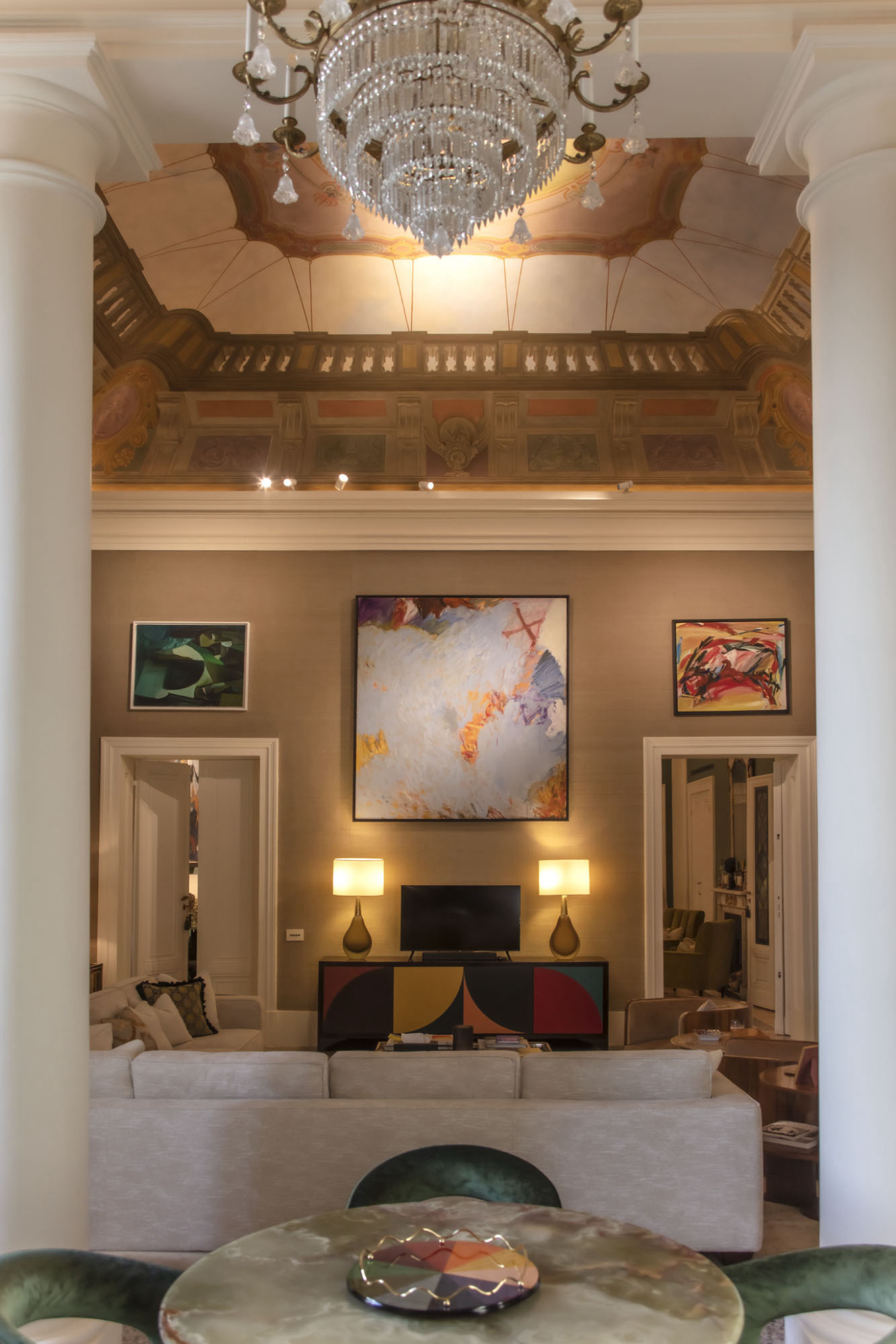
Which artist are you currently most excited about and why?
Financially speaking, just about all female artists of any significant note and provenance. They’re all still massively undervalued and the trend in buying female art is still, quite surprisingly, in its absolute infancy. Hugely undervalued artists that spring to mind are Leonor Fini, Dorothea Tanning, and all of the Impressionist and Post-Impressionists. More broadly speaking, I love the female Surrealist area. It’s the genre in particular where I truly feel that the top women were better painters and more imaginative than the top males.
What factors do you consider when expanding your collection?
Well, I like to form collections within the collection and give a cohesive feel. Then a collector feels that you’re constantly making steps towards finishing a jigsaw and that’s very satisfying. Although the jigsaw never gets finished, of course. Aside from that, the technical aspects are creating an emotion of some kind, composition, color, condition, provenance, and price.

What was your biggest influence in fostering your passion for art?
Having a passion for history. The overwhelming feeling when I walked into a castle or cathedral or the British museum as a child, somehow translated into a similar feeling when I walked into the Louvre and started spending my weekends there. But then art took over as my passion as it has the double-whammy of the historical aspect to the piece, as well as the genius of its creation and the added feeling that this gives you.
What’s the biggest misconception about collecting antiquities? What draws you to it?
It is easy to get too tied up in thinking about the history of the piece, when an ancient marble sculpture, or bronze statue, or vase is also a great work of art, made in the artist ateliers of the past. When you look at a Canova or a Rodin, you see it as an artwork. When you look at a Roman sculpture, your first instinct is to try to imagine the Roman building that it was in or what someone was wearing or saying that was standing next to it 2,000 years ago. People lose sense of the artistry because it’s so old.

What inspired your shift to collecting female artists? What was the most surprising thing you learned during that transition?
I could buy the greatest artworks by the greatest women artists of the last 160 years. They were on the market, and museum quality, and accessible, and relatively affordable. Why wouldn’t anyone want to put together a museum-quality collection in this area while that unbelievable opportunity still exists? I love loaning works to museum exhibitions and owning my own museum and giving tours of my houses to museum patron groups. That all comes about because I’ve been able to buy masterpieces by the top women artists, and it’s been constantly surprising to me that this has even been possible, and actually still is. At least at the moment.
What are the three must-see shows this month?
“Surréalisme” at the Centre Pompidou. “Now You See Us” is just finishing at Tate Britain. Helen Frankenthaler is at the Palazzo Strozzi, Florence. Jackson Pollock is upcoming at the Picasso Museum in Paris. (I have Lee Krasner’s most important picture, Prophecy, on loan there for the show).




